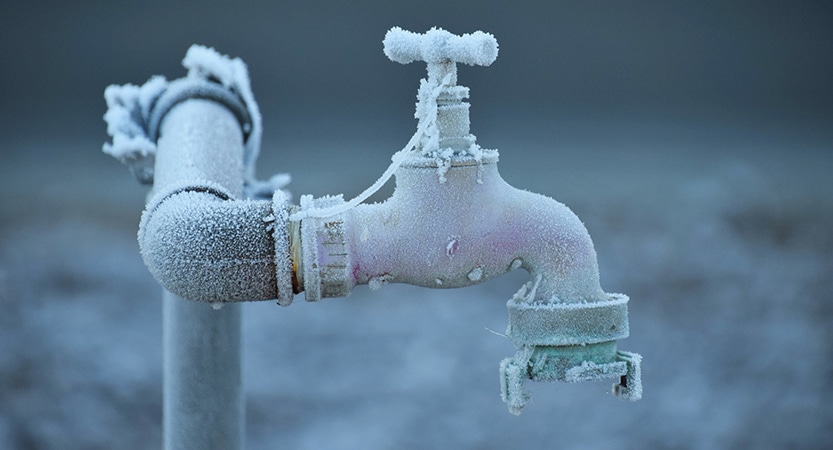Ways to Protect Pipes from Cold Weather: Expert Tips
Ways to Protect Pipes from Cold Weather: Expert Tips
Blog Article
The article author is making a number of great annotation related to Helpful Tips to Prevent Frozen Pipes this Winter in general in the article directly below.

Winter can wreak havoc on your pipes, especially by freezing pipelines. Here's exactly how to stop it from occurring and what to do if it does.
Introduction
As temperature levels drop, the threat of icy pipes rises, possibly resulting in pricey fixings and water damages. Recognizing just how to prevent icy pipes is crucial for house owners in chilly climates.
Understanding Frozen Pipelines
What creates pipes to freeze?
Pipelines freeze when subjected to temperature levels below 32 ° F (0 ° C) for expanded durations. As water inside the pipes freezes, it increases, putting pressure on the pipe wall surfaces and potentially creating them to break.
Dangers and damages
Frozen pipes can lead to water system disruptions, home damages, and expensive repair work. Burst pipelines can flooding homes and create extensive architectural damage.
Signs of Frozen Pipes
Determining frozen pipelines early can stop them from rupturing.
Just how to determine frozen pipelines
Look for reduced water circulation from taps, unusual smells or noises from pipelines, and noticeable frost on revealed pipelines.
Prevention Tips
Insulating at risk pipes
Wrap pipelines in insulation sleeves or make use of warmth tape to safeguard them from freezing temperatures. Concentrate on pipes in unheated or exterior locations of the home.
Heating techniques
Keep indoor rooms adequately heated up, particularly areas with pipes. Open up cabinet doors to enable warm air to distribute around pipes under sinks.
Shielding Outdoor Pipes
Yard pipes and exterior taps
Disconnect and drain pipes garden hose pipes prior to winter season. Install frost-proof spigots or cover outside faucets with insulated caps.
What to Do If Your Pipelines Freeze
Immediate activities to take
If you think icy pipelines, keep faucets open to relieve pressure as the ice melts. Utilize a hairdryer or towels taken in hot water to thaw pipelines slowly.
Long-Term Solutions
Structural adjustments
Think about rerouting pipes away from exterior wall surfaces or unheated locations. Add additional insulation to attic rooms, cellars, and crawl spaces.
Updating insulation
Purchase top notch insulation for pipes, attic rooms, and wall surfaces. Correct insulation helps preserve regular temperature levels and decreases the risk of frozen pipes.
Verdict
Avoiding icy pipelines calls for aggressive procedures and fast reactions. By understanding the reasons, signs, and safety nets, home owners can protect their plumbing throughout cold weather.
5 Ways to Prevent Frozen Pipes
Drain Outdoor Faucets and Disconnect Hoses
First, close the shut-off valve that controls the flow of water in the pipe to your outdoor faucet. Then, head outside to disconnect and drain your hose and open the outdoor faucet to allow the water to completely drain out of the line. Turn off the faucet when done. Finally, head back to the shut-off valve and drain the remaining water inside the pipe into a bucket or container. Additionally, if you have a home irrigation system, you should consider hiring an expert to clear the system of water each year.
Insulate Pipes
One of the best and most cost-effective methods for preventing frozen water pipes is to wrap your pipes with insulation. This is especially important for areas in your home that aren’t exposed to heat, such as an attic. We suggest using foam sleeves, which can typically be found at your local hardware store.
Keep Heat Running at 65
Your pipes are located inside your walls, and the temperature there is much colder than the rest of the house. To prevent your pipes from freezing, The Insurance Information Institute suggests that you keep your home heated to at least 65 degrees, even when traveling. You may want to invest in smart devices that can keep an eye on the temperature in your home while you’re away.
Leave Water Dripping
Moving water — even a small trickle — can prevent ice from forming inside your pipes. When freezing temps are imminent, start a drip of water from all faucets that serve exposed pipes. Leaving a few faucets running will also help relieve pressure inside the pipes and help prevent a rupture if the water inside freezes.
Open Cupboard Doors
Warm your kitchen and bathroom pipes by opening cupboards and vanities. You should also leave your interior doors ajar to help warm air circulate evenly throughout your home.

As a devoted person who reads on How to Prevent Your Pipes From Freezing, I thought sharing that excerpt was really useful. Enjoyed our review? Please quickly share it. Help others find it. Thanks a bunch for your time. Return soon.
Schedule Estimate Report this page